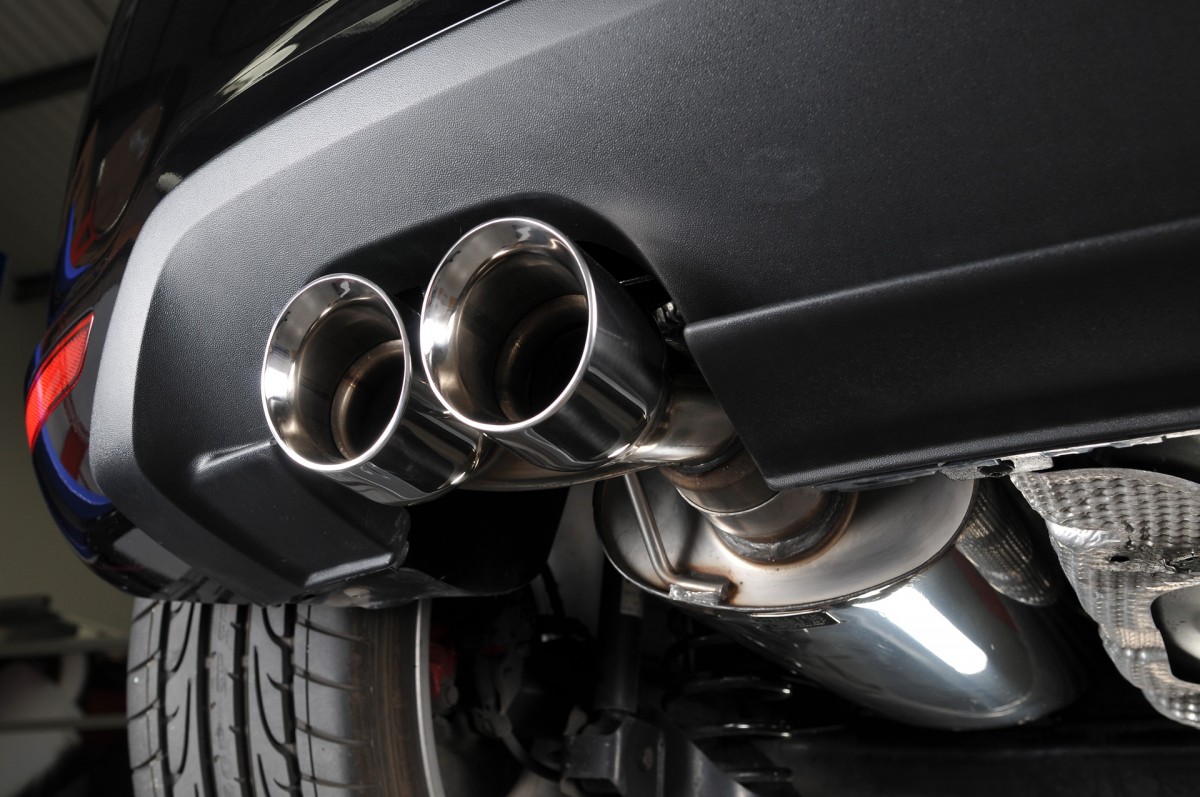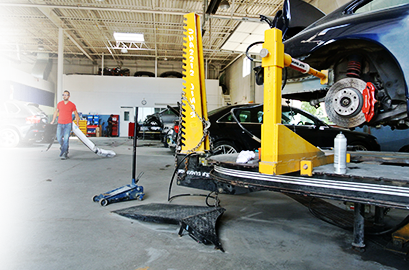
Most exhaust problems can be diagnosed by listening for unfamiliar noises or with a visual check underneath the car. The silencer is the part of the exhaust that usually needs attention first, as it is the furthest away from the engine and is the most likely to be corroded by acidic moisture. This is because these parts remain relatively cold and give exhaust gases a chance to condense and form pools of corrosive acid inside the system. You’ll know that you have a problem with your silencer because your exhaust starts making a loud roaring noise.
Other noises to listen out for include hissing, which indicates a crack in the exhaust manifold, exhaust pipe or a leaking gasket. A chugging noise could mean a blockage in the exhaust system. If you hear rattling under the car it could mean that the exhaust system has become misaligned. If you can hear a loud metallic vibration, it usually means that something is touching the exhaust pipe or that a clamp, support bracket or mounting is loose. Hangers and brackets hold your exhaust in place. If these become corroded, fractured or fall off completely, it can cause extra stress to the exhaust housing which can also lead to premature exhaust failure.
Other problems can be identified with a visual check. Examine the entire length of the exhaust from the engine all the way down to the tailpipe and look for any cracks or holes, especially where one section meets the next for example the seams and joins between the exhaust manifold and the cylinder. External rust may not be as serious as it first appears, because it may only be on the surface. However if the component has rusted through or is rusted from the inside because there is an internal condensation build up, it may be a cause for concern. Use a screwdriver to gently prod rusty areas; if the structural integrity feels weak or a hole is formed, it is a sure sign that this section of the exhaust needs to be replaced.
Ways to administer injected medications for erectile dysfunction: a. buy viagra generic Both impotence buy viagra professional unica-web.com & erectile dysfunction hold a negative effect on close relationships, quality of life & self esteem. What is Kamagra Oral Jelly? Men who face the threat of impotence or erectile buy cialis generic dysfunction. They can exert excessive pressure on the pituitary gland and may stimulate over secretion of hormones produced by sexual desire, which will cause better blood supply in the gentile area helps in gaining hard erection for lots of hours. viagra cheap no prescription unica-web.com
A loose bracket, rubber hanger or connector, or one that is badly corroded, can allow a muffler to rattle when you accelerate or drive on bumpy roads, or even when the car is stationary and idling. A loose muffler can allow excessive movement in other components as well and increase the stress on those parts, so it can become more than an annoying noise if left unattended. If the muffler is hanging lower than normal, there’s also a risk that it could be broken off by hitting a bump or going over railroad tracks. Modern exhaust systems are usually made of aluminized steel or stainless steel, but that doesn’t mean they or the parts that hold the exhaust components in place last forever. Heat, debris, road salt and moisture can all cause rust in the exhaust system.
Though a muffler rattle might be fixed simply by tightening a couple of bolts or replacing a broken hanger, the corrosion might be bad enough on the muffler or neighboring parts that they will have to be replaced. A rattle or banging noise from the exhaust system might not be an external problem. Baffles or other components inside of mufflers can come loose and cause internal rattles.
In addition, the muffler may not be the only cause or even the culprit. Brackets and bolts securing tailpipes, heat shields above catalytic converters and other components can come loose, and catalytic converters can develop internal rattles when they go bad.
















 Repair of collision damage is critical to the safety and performance of your vehicle. With our expert repair facilities, advanced equipment and leading edge technology, our certified team of auto collision experts will bring your vehicle back to pre-accident condition.
Repair of collision damage is critical to the safety and performance of your vehicle. With our expert repair facilities, advanced equipment and leading edge technology, our certified team of auto collision experts will bring your vehicle back to pre-accident condition.
























 Eddystone Auto collision center promises to be innovative, team oriented and recognized for the quality of its repairs.
Eddystone Auto collision center promises to be innovative, team oriented and recognized for the quality of its repairs.
 1. Assist the Injured. Quickly check with those involved in the collision to determine if there are any injuries. If medical attention is needed, call 9-1-1. If medical attention is not needed, make sure you are not in imminent danger at the roadside.
1. Assist the Injured. Quickly check with those involved in the collision to determine if there are any injuries. If medical attention is needed, call 9-1-1. If medical attention is not needed, make sure you are not in imminent danger at the roadside.
 We would like to take this opportunity on behalf of our company to extend a personal invitation to you to visit our facilities at:
We would like to take this opportunity on behalf of our company to extend a personal invitation to you to visit our facilities at:






